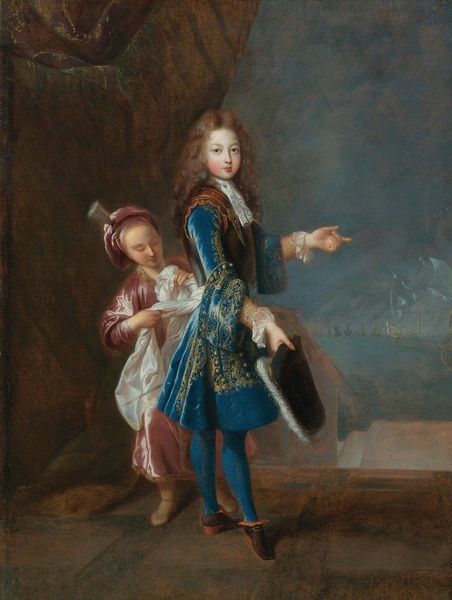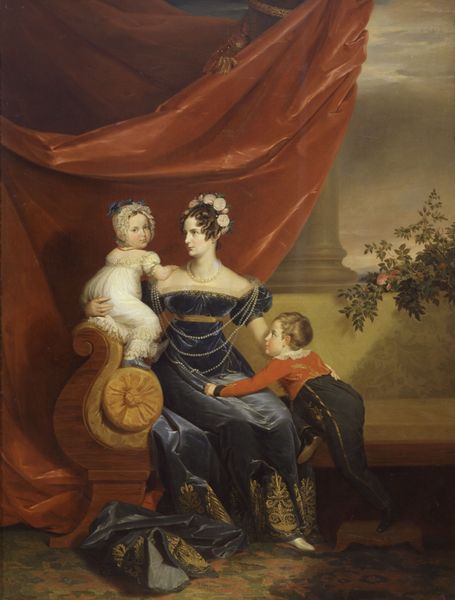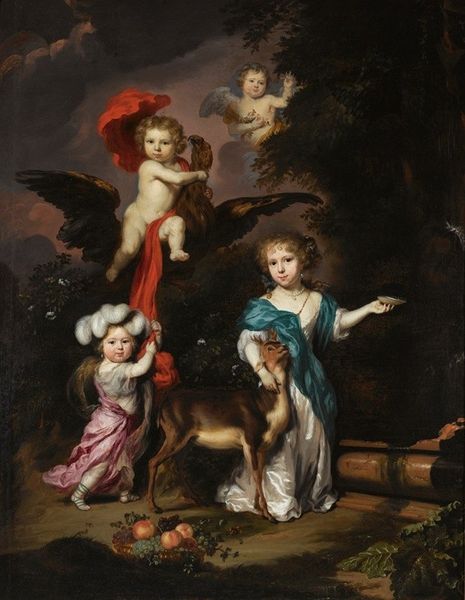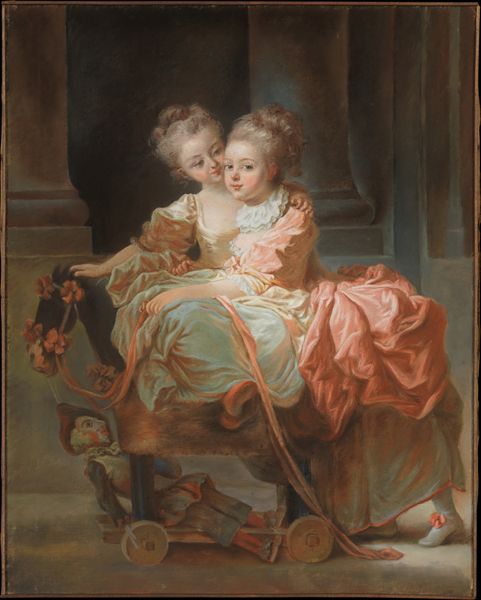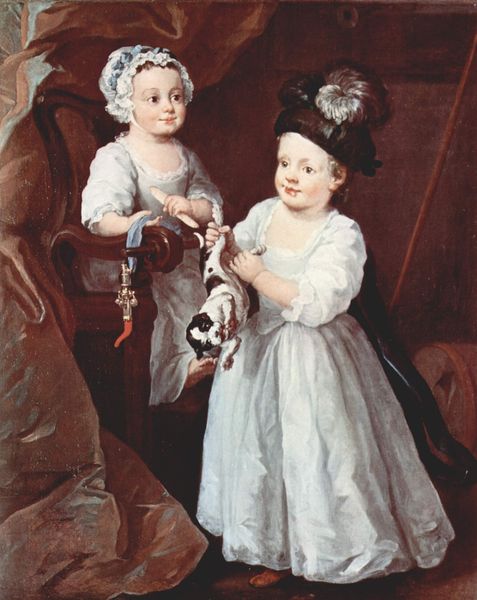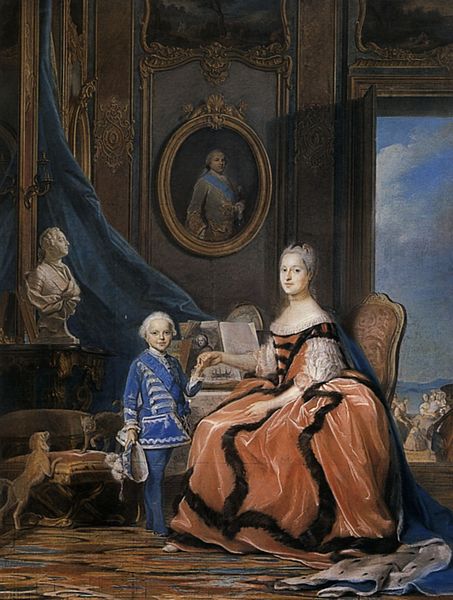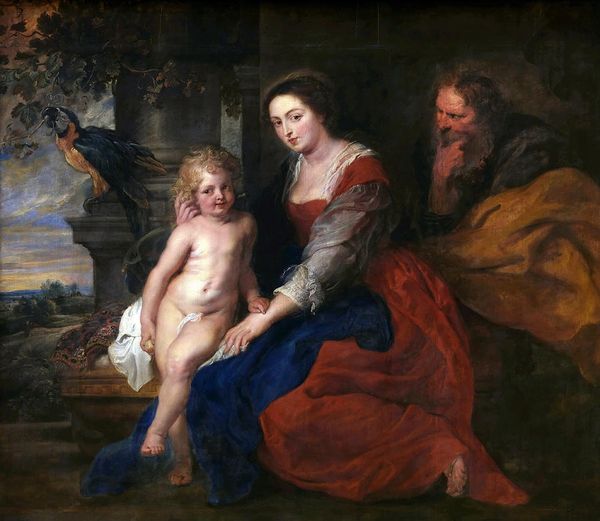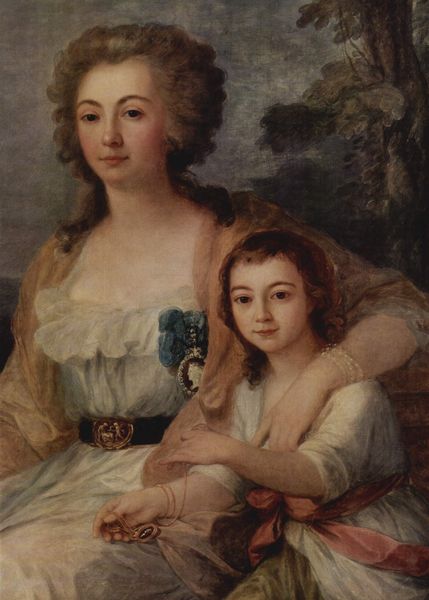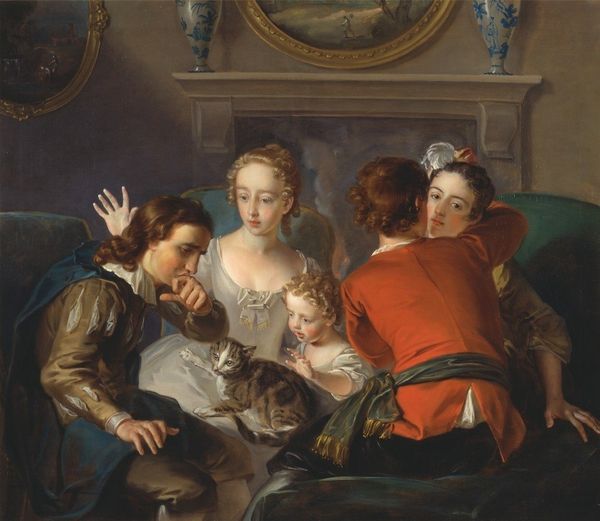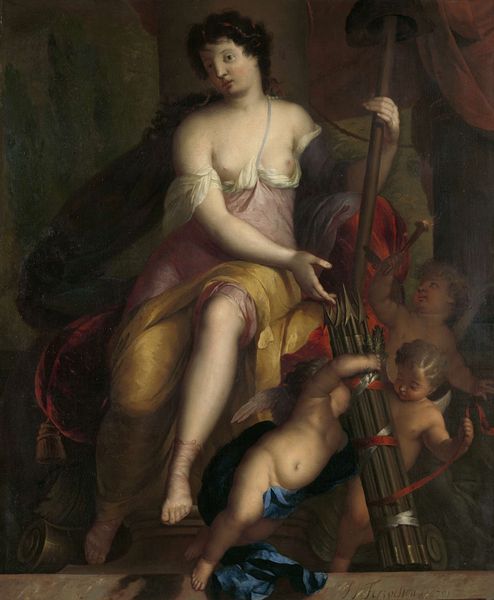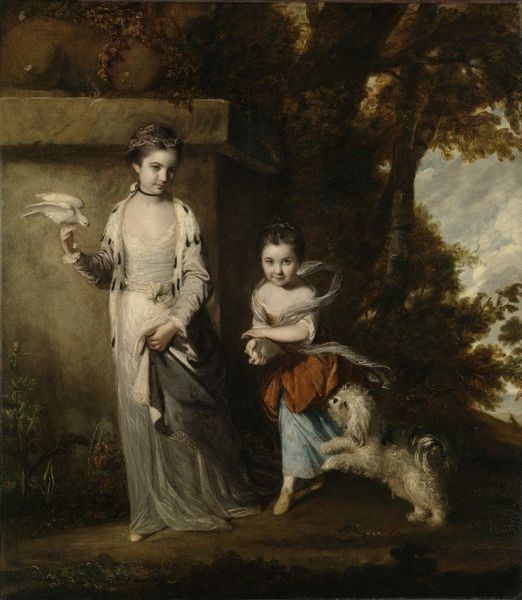
painting, oil-paint
#
portrait
#
baroque
#
painting
#
oil-paint
#
figuration
#
famous-people
#
child
#
genre-painting
Copyright: Public domain
Curator: Here we have an oil painting, attributed to Antoine Pesne, showing "Frederick and his sister Wilhelmina". Editor: My first thought is that the tonality, especially the shadows, evokes both an air of stately elegance and perhaps a hint of melancholic drama. What strikes you immediately about it? Curator: I'm drawn to what this piece tells us about production under aristocratic patronage. How does commissioning such work perpetuate certain class structures? How is their elite status communicated through the very materiality of art? Consider the textiles, for example: silk, velvet... What stories do they tell about trade routes, labor? Editor: Absolutely. From a purely visual perspective, I'm fascinated by how those lush textiles interplay with the stark lighting, particularly on Wilhelmina's dress. The contrast creates a really intriguing focal point, directing the viewer's eye while echoing an earlier Baroque aesthetic of drama and opulence through tenebrism. The use of chiaroscuro adds substantial volume to their garments. Curator: Exactly, the opulent costumes signal status, but how were they made, who labored to create them, what did it mean for access, consumption, and the economic underpinnings? This portrait naturalizes such inequalities and it does so through very calculated means of artistic production. Also note the assistant with the umbrella in the back. It's all quite deliberate and political, isn’t it? Editor: Absolutely, every element within the frame is doing meaningful visual work. Even the seemingly spontaneous elements contribute. Notice the loose brushwork on the dog versus the intense rendering of the children's faces. It sets up a contrast between liveliness and composure, reinforcing their place, their expected roles. The asymmetrical arrangement also offers a certain dynamism, further playing with visual balance and underlying narratives. Curator: Right, all contributing to constructing this image of dynastic power. Editor: By examining Pesne's piece through both lenses – considering its materiality and dissecting its form – we gain not just a greater visual, but an improved understanding of what was and still is, really at stake. Curator: Agreed, analyzing its artistic qualities and production reveals deeper social meanings.
Comments
No comments
Be the first to comment and join the conversation on the ultimate creative platform.
